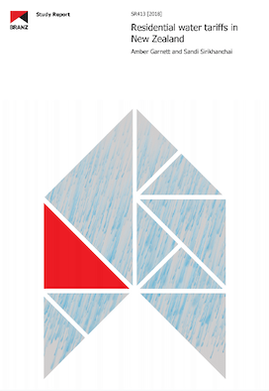
SR413 Residential water tariffs in New Zealand (February 2020)
Product Description
Freshwater in New Zealand is considered to be abundant by international standards, due to the plentiful rainfall experienced across the country and the comparatively low population density. Yet there is very little information in New Zealand about how we use water in the home. Aside from that, there are 67 territorial authorities (unitary authorities, city and district councils) charging for water services through a variety of mechanisms, making it difficult to compare how the supply of water is charged across New Zealand.
Whilst geographically close, the tariff structures and charging mechanism used by territorial authorities (the water service providers) are independent of each other and can vary significantly within the same region.
The majority of residential properties in New Zealand are not metered, and the predominant form of charging is by way of a targeted fixed rate. For those properties that are metered, a combination of fixed and volumetric charges is the most common approach. Of those councils that implement residential metering, just over half implement an extraordinary water use charge.
Wastewater charging follows a similar trend, with targeted fixed rates accounting for the majority of charging throughout the country. Stormwater, however, is more variable with either targeted fixed rates, incorporating the charge into the general rates, or variable rates using cost per capital value being used across the country.
Product Information
| Publication date | November 2018 |
|---|---|
| Author | Amber Garnett and Sandi Sirikhanchai |
| System number | SR413 |